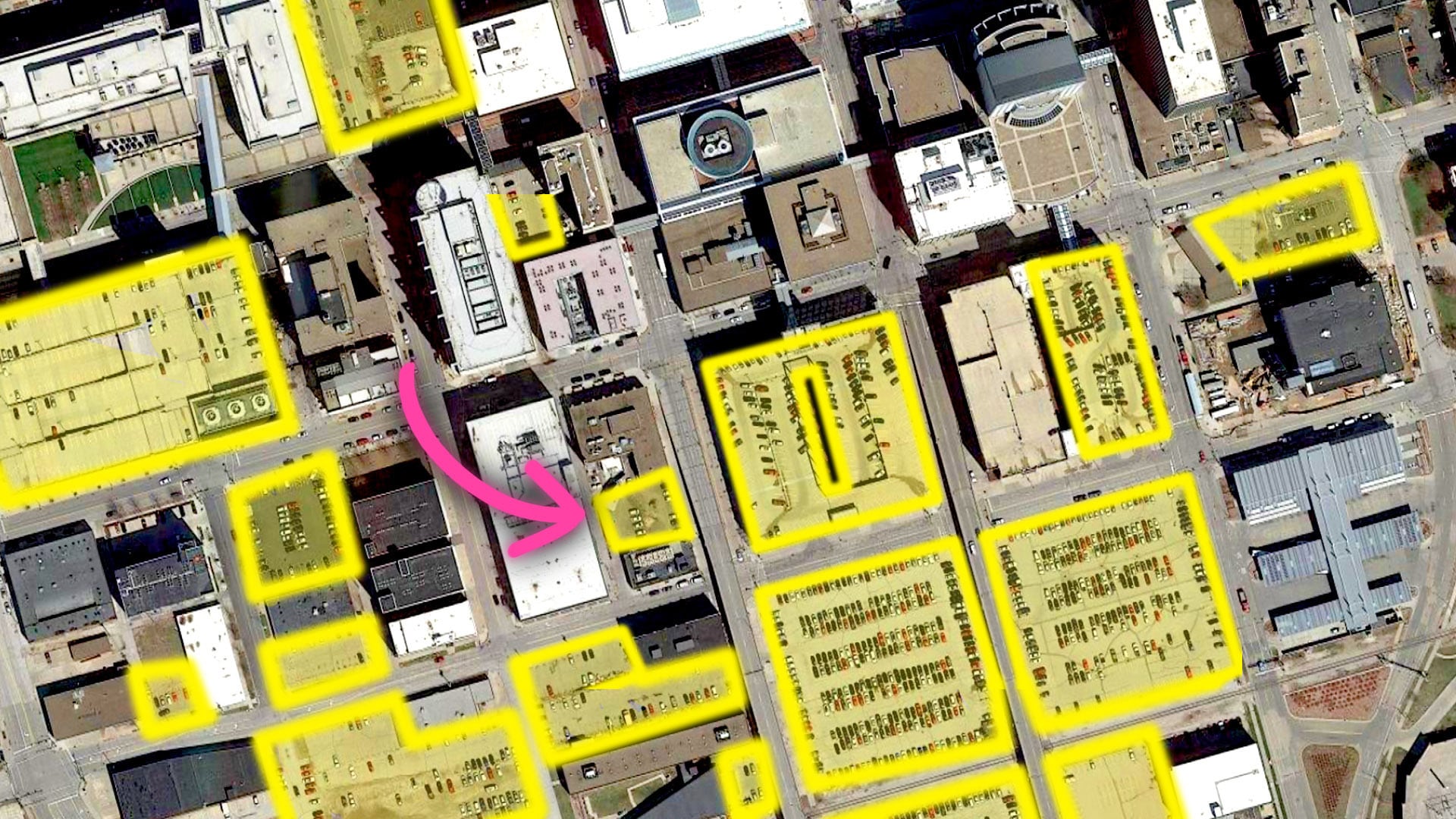For a person living in a dense urban center like the New York City metro area, the idea of finding a street parking space can almost feel like hitting the lottery. With so many cars on the road, it might appear to local officials that an obvious fix is to build more places to park, but the approach had some unexpected consequences.
So many parking garages exist because local governments feared a lack of adequate parking would hurt the economy. Between 1970 and the early 2000s, it was a common idea that downtown areas simply didn't have enough space for parked cars that could sustain the area's economic growth.
No cars were the equivalent to no business, they thought.
So, cities began rolling out parking minimums. The practice, first introduced in Ohio back in 1923, requires developers to include a specific number of off-street parking spaces in their building development plans.
Parking Minimums Drive Out Communities
Despite parking minimums creating more spaces for automobiles, city planners found that those allotted spaces just weren't enough to meet the growing demand. So, they kept expanding parking offerings but not without a cost.
The expansions often meant the destruction of historic buildings and communities of people who may have had roots going back decades. In the 1970s Dallas, Texas, the city council voted to bulldoze a predominantly Black neighborhood, removing homes and businesses to make way for the car.
The displacing of families and communities, in hindsight, just isn't worth the trouble in the long term, particularly as a swath of those parking spaces go unused. In 2005, Donald Shoup, a professor at UCLA, published The High Cost of Free Parking where he examines the impact of all of this parking construction. Among his findings was that only 30 percent of the area in downtown parking locations were occupied by cars and in many instances, there were up to four times as many spaces as vehicles.
And, it's not just an American problem. In Amsterdam, the common means of transportation is biking with 65 percent of everyday commuting trips made via bike. As a result, officials are working to reverse course on focusing on car travel and plan to remove thousands of parking spaces by 2025.
High Price Tag of Parking Development
While city planners initially thought doubling down on parking spaces would correlate to more downtown visits and ultimately would contribute to more business, it turns out that excess parking is actually costing cities more in the long run.
A study by Eric Scharnhorst at the Research Institute for Housing American found that if parking projects were approved in New York, Seattle, Philadelphia, Des Moines, and Jackson, Wyoming, the price tag would be a staggering $81 billion. In places like Des Moines, there are 18 times as many parking spaces as there are cars on the road. In the same city, a parking garage registered at just 8 percent full in 2018.
In many instances, business owners aren't able to foot the bill that comes along with opening a business and its accompanying parking and in turn, have to lean on banks for loans that often have higher interest rates.
"Today's empty parking spaces can be seen as a land bank in some of the most convenient city locations, or, taken another way, a future is arriving where builders will be able to provide more of everything else and fewer parking spaces," said Scharnhorst.
The most devastating part of the trend isn't even the cost to developers and business owners but the fact more people are encouraged to drive rather than take public transportation. More cars on the roads mean more damage to the environment as well as an increased likelihood of accidents for both drivers and pedestrians.
Removing Parking Minimums
Some cities are already moving to reduce the glut of parking and cars in downtown areas. In 2017, Buffalo, N.Y. became the first U.S. city to remove mandatory parking minimums for developments smaller than 5,000 square feet, followed by Hartford, Connecticut, for all of its residential construction, shortly thereafter. Property owners in downtown Columbus, Ohio voted to buy bus passes for 43,000 employees in order to reduce the number of cars in the area. The program was renewed again in November 2020.
However, while some cities have made it a goal to reduce the number of parking spaces, the question remains: what to do with all the existing construction? Some suggestions include arranging bike parking spaces, using them as drop-off and pick-up spots for rideshare services, turning lots into green spaces, creating additional housing, and even replacing them with food trucks in some instances.
Video produced by Ali Larkin and John Tejada. Article written by Lawrence Banton.



